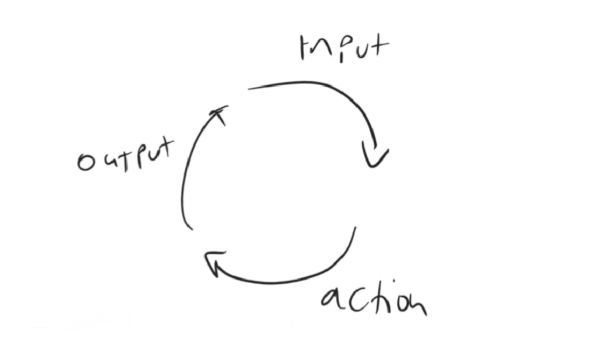How Growth Loops Drive Sustainable Growth in Crypto (And Why Funnels Fall Short)

Most crypto projects rely on marketing to drive growth, tactics such as massive awareness pushes, hype campaigns, and short-term funnels. But the reality is this: if you're building in Web3, growth loops are what will sustain you.
In this post, we’ll break down what growth loops are, why traditional funnels fall short, and how Web3 teams can use loops to generate compounding, long-term traction.
Why Funnels Don’t Work for Growth in Web3
Funnels operate on a linear model: attract users at the top, convert a portion of them at the bottom. The structure assumes a one-way journey. But crypto ecosystems are circular by nature, users aren’t just passive consumers. They’re community members, contributors, co-creators, and evangelists.
Funnels are good for short-term performance marketing. They work when your goal is to guide someone through a known path: ad > click > landing page > signup. But they often fail to:
- Create lasting engagement
- Incentivize ongoing participation
- Encourage user-driven expansion
- Reflect the fluid, multi-touch journeys of on-chain users
In crypto, people move quickly, discover products in fragmented ways, and often act as both users and distributors. As a product owner, you need to create a way to multiply the inputs of your users in a compounding fashion
And growth loops are better suited to driving this compounding growth.
What Is a Growth Loop?
A growth loop is a closed system where the actions of one user generate value that attracts or activates another. In contrast to linear funnels, growth loops are circular: the output becomes the next input.
Instead of relying on one-time campaigns, loops create self-sustaining mechanisms that scale with use. Each participant contributes to the system in a way that drives more users into the same system.
Let’s break it down:
- A user takes an action (e.g., shares your content, refers a friend, creates value)
- That action generates new awareness or incentive (a friend sees it, a reward is unlocked)
- That awareness or incentive brings in new users
- Those users take the same or similar action, and the loop continues
Over time, this builds compounding growth. Your users don’t just consume, they contribute to the engine that brings in more people.
The Anatomy of a Growth Loop
Every strong growth loop has four essential parts:
- Input: Something draws a user in. It could be a piece of content, a referral, a social post, or a reward. This initial trigger brings the user into the ecosystem.
- Action: The user takes a high-leverage action inside your product, something that benefits them and sets up the loop. This could be minting, staking, sharing, inviting, or contributing.
- Output: That action generates value: a tweet, a token reward, a visible transaction, a published piece of content. This output becomes something new users can discover.
- Loop: New users see the output, are incentivized to participate, and the cycle repeats. The more users enter, the stronger the loop becomes.

How to Design a Growth Loop That Works
To design a working growth loop, you need more than just a clever idea, you need to map the entire system around user behavior. Here's how to do it:
1. Identify current user behavior
Begin by observing what your users are doing right now. Are they holding tokens but not participating? Lurking in Discord but not posting? Following your brand but not engaging?
2. Define the target behavior
Now ask: what do you want them to do instead? This might be voting on proposals, creating content, referring friends, or staking assets. The desired action should align with long-term value for your protocol.
3. Build a product experience that drives behavior change
This is the heart of your loop. How do you guide users from what they’re currently doing to what you want them to do? The loop must make this transition natural and rewarding. Quests, social signals, and public rewards can help reinforce the behavior shift.
4. Choose the core action to reinforce
Make sure the action is:
- Valuable to the user
- Discoverable by others
- Repeatable
Avoid one-time or gimmicky actions. Think about behavior that compounds value with each new participant.
5. Design the output for visibility and virality
The output of the loop, whether it's a badge, a mint, a post, or a leaderboard entry, needs to circulate. It must:
- Be public or easy to share
- Live where your audience already hangs out
- Spark curiosity or FOMO
6. Streamline the entry point for new users
Once someone sees that output, how easy is it for them to join? The user journey should be seamless, with:
- Clear calls to action
- Minimal friction
- Built-in guidance
7. Reward meaningful contributions, not spam
The loop should reward quality participation. Use:
- Anti-sybil measures
- Reputation scores
- Decaying points or tiered rewards
This prevents abuse and ensures your loop fuels sustainable growth.
8. Monitor, refine, and evolve the loop
No loop is set-it-and-forget-it. Use analytics to:
- Identify where drop-offs happen
- Test different incentive structures
- Improve UX and messaging over time
Common Mistakes (And How to Avoid Them)
Thinking Short-Term
A campaign that relies on airdrop hunters or bot engagement might bring a spike, but the loop dies when the rewards stop.
Fix: Design for sustainability. Each action must benefit the user and the ecosystem. If the loop stops when rewards dry up, it was never a loop to begin with.
Overcomplicating the Loop
If your loop has too many steps or unclear outcomes, users will drop off. Complexity kills conversion.
Fix: Keep it simple. Focus on one core action that drives the loop. If users have to read a 10-page PDF to participate, it’s not going to scale.
Misaligned Incentives
Loops that reward spammy behavior (i.e., fake tweets, low-quality quests, sybil attacks) damage the brand and community trust.
Fix: Reward real contributions. Highlight quality over quantity. Incentivize things that reflect your values, not just your KPIs.
Ignoring Product Fit
No growth loop can save a product no one wants. If your core experience isn’t compelling, users won’t stick around long enough to complete the loop.
Fix: Make sure your product solves a real problem. Run user tests. Don’t build a loop until the core value prop is clear and sticky.
Copy-Pasting Loops from Other Projects
Just because a meme quest worked for another protocol doesn’t mean it will work for you. Every project has its own audience, voice, and user journey.
Fix: Start with first principles. Where do your users discover your project? What do they care about? How can you align their behavior with your goals?
Loops Build Moats
In crypto, trust and retention are not cheap. Funnels can capture clicks. Loops capture belief.
When you build a growth loop, you’re building a system. One where users help grow the ecosystem because it benefits them too.
The best loops:
- Align with user desires
- Reward meaningful behavior
- Create compounding value over time
Crypto doesn’t need more noise. It needs better systems. Build loops that grow stronger the more they’re used, and your ecosystem won’t just grow. It will compound.Want help building a growth loop that actually works for you? Book a call with our team to map so we can map it out together and avoid costly mistakes.

